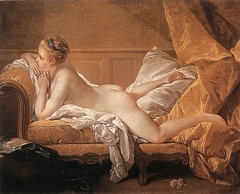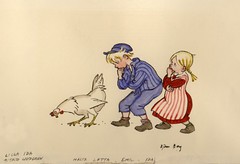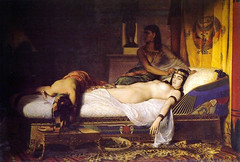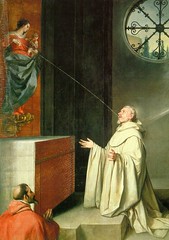it is time for Icon of Erotic Art #30.

Painting of Marie-Louise O’Murphy by François Boucher c. 1751
Many of the IoEAs we have featured have been out of the mainstream, even obscure. Not for today’s icon. It is one of the first works one encounters when studying the history of eroticism in art. It celebrates the trope of the big and beautiful woman, an art later perfected by Rubens.
Casanova remarked on this painting and its model O’Murphy which he claims to have known:
The position in which he painted it was delightful. She was lying on her stomach, her arms and her bosom leaning on a pillow, and holding her head sideways as if she were partly on the back. The clever and tasteful artist had painted her legs and calves with so much skill and truth that the eye could not but wish to see more; I was delighted with that portrait; it was a speaking likeness, and I wrote under it, “O-Morphi,” not a Homeric word, but a Greek one after all, and meaning beautiful.”–Casanova, Histoire de ma vie
Marie-Louise O’Murphy de Boisfaily (21 October, 1737 – 11 December, 1814) was a child-courtesan, one of the several mistresses of King Louis XV of France.
She was the fifth daughter of an Irish officer who had taken up shoemaking in Rouen, France. After his death, her mother brought the family to Paris.
In 1752, at fourteen years of age, she posed nude for a memorable and provocative portrait by artist François Boucher. Her beauty caught the eye of Louis XV. He took her as one of his mistresses, and she quickly became a favourite, giving birth to the king’s illegitimate daughter, and possibly a second one.
After serving as a mistress to the king for just over two years, O’Murphy made a mistake that was common for many courtesans, that of trying to replace the official mistress. Around 1754, she unwisely tried to unseat the longtime royal favorite, Madame de Pompadour. This ill-judged move quickly resulted in O’Murphy’s downfall at court. After three marriages, she died in 1814 at the age of 77.


















